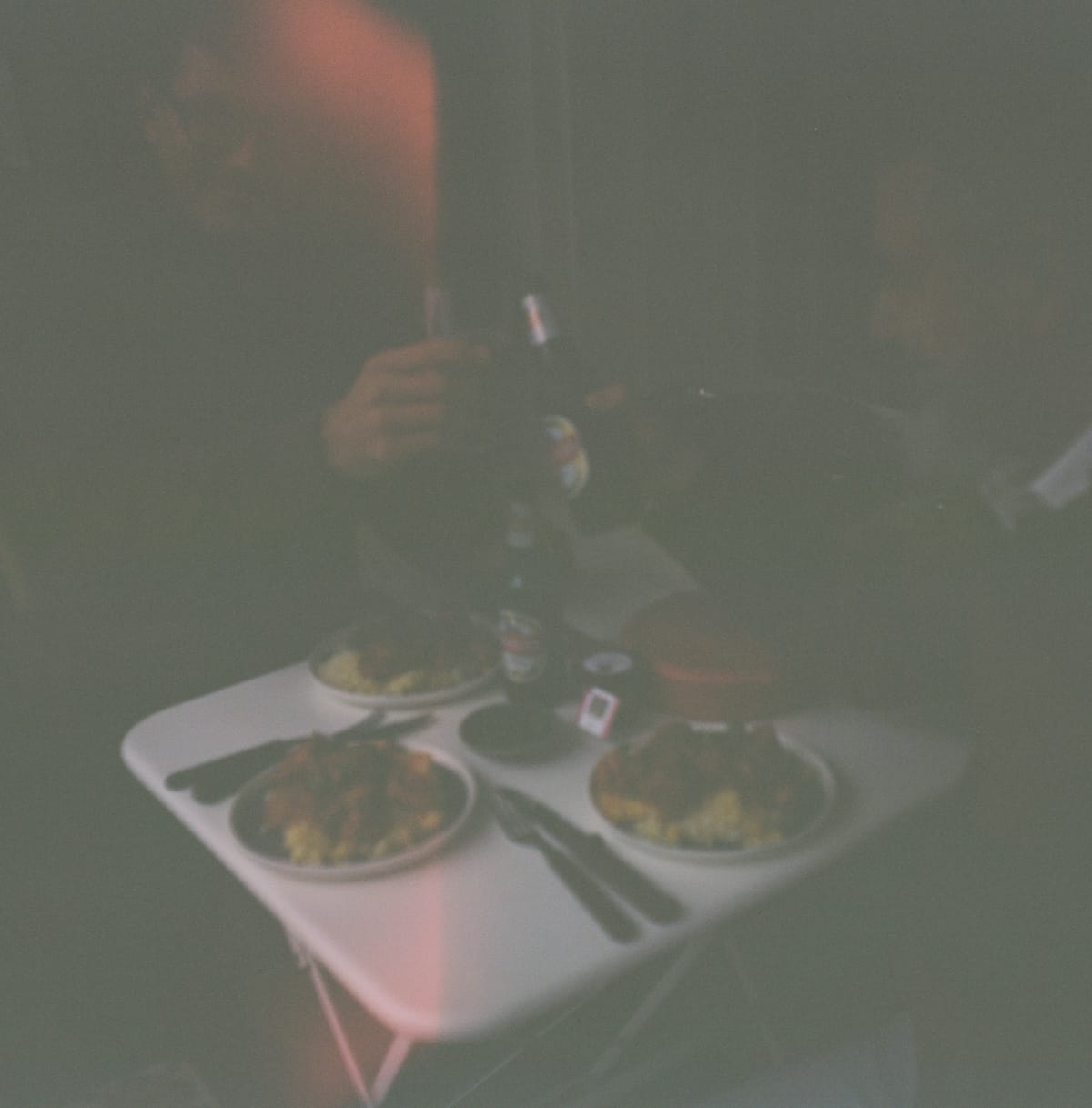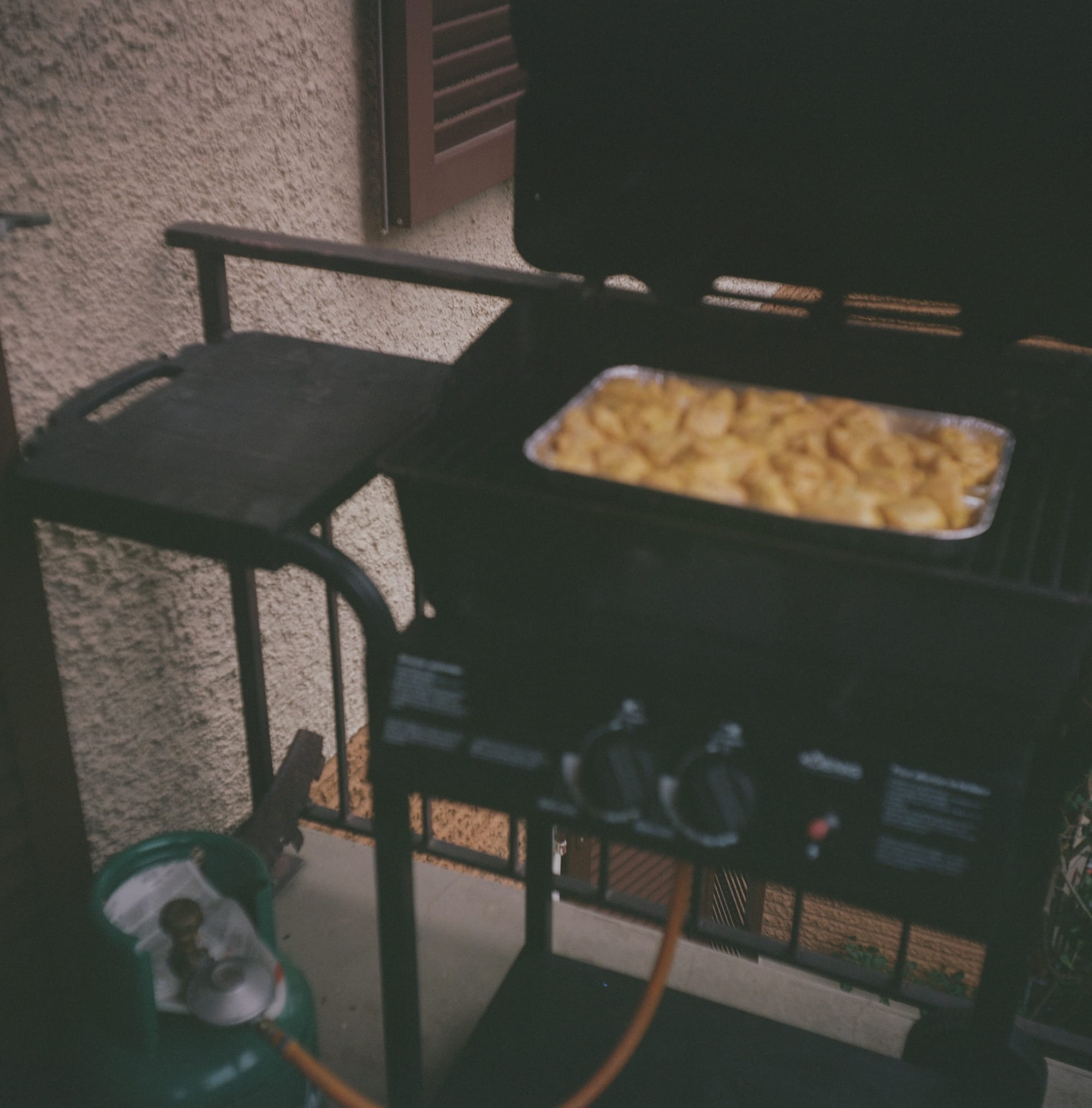What to eat INDIA 🇮🇳 Butter chicken
... if we think of Indian cuisine as a truly global cuisine given the ubiquity of Indian food and the international reach of the diaspora and business community, perhaps no dish is more associated with the subcontinent worldwide ... in this one dish, we have the entire history of modern India...

Butter chicken
Published October 11, 2024 · by Amanda Rivkin Häsler
India is an enormously diverse nation that it is near impossible to speak of one national dish rather than of regions. However, if we think of Indian cuisine as a truly global cuisine given the ubiquity of Indian food and the international reach of the diaspora and business community, perhaps no dish is more associated with the subcontinent worldwide than butter chicken. And in this one dish, we have the entire history of modern India, its diverse cultures and the origin story of not just a food but an entire nation.
While butter chicken, also known as murgh makhani, may have originated in the Indian capital Delhi at the Moti Mahal restaurant in the Daryaganj neighborhood in old Delhi, the original restaurant calling itself by this name can be found in Peshawar on what is now the perilous border of Afghanistan and Pakistan.
While Moti Mahal of Peshawar did not serve butter chicken, the origin of the dish of chicken with spiced tomato and butter similar to chicken tikka masala is in fact the history of Partition.
Moti Mahal in Peshawar closed before the fateful day of August 14, 1947, when India would no longer be the British raj under the crown’s sphere of influence but divided according to the plans of Lord Mountbatten. The inter-communal violence that resulted from Mountbatten’s plan sent refugees fleeing every which way and initiated one of the largest population-transfers the world had ever seen, on par with the decade prior in Europe.
Muslims left the new India for the new nation of Pakistan and Hindus and Sikhs also were on the move to the new India. But the lines were never so clean and the orders inexact if not downright anarchic. The independence of Bangladesh would not come for more than 20 more years and in the interim, Bengalis would have East Pakistan to call home.
India’s territorial border with China was never resolved and remains so to this day. Let us not even discuss Kashmir, that will be a topic for another week of Swiss Global Dining as yes, there are Kashmiris in Switzerland, but Kashmir to this day remains divided and contested between India and Pakistan.
The two men whose names would endure as icons of the new, post-Partition old Delhi restaurant known as Moti Mahal in the Daryaganj neighborhood were both made refugees by the realities of Partition. Kundan Lal Gujral and the man who would become his business partner, Kundan Lal Jaggi, worked as waiters in Mokha Singh Lamba’s original Moti Mahal location in Peshawar. They found each other by chance after arriving in Delhi amid the chaos of Partition.
Jaggi was roaming Roshnara Road when he saw Kundan Lal Gujral and Thakur Dass, a rice and pulses wholesaler they knew from across the road of the original Moti Mahal of Peshawar. The two were buying half a bottle of whiskey at a shop when they ran into Jaggi. The three celebrated their reunion over whiskey and as The Sunday Guardian, an Indian newspaper, reported in 2015, Gujral said “it was time for them to start a business.”
A Sikh in Delhi offered to sell them a shop for 6,000 rupees, no small change in 1947. The business began as a tea shop with Jaggi toasting bread for customers while Gujral made the tea. Jaggi recruited more people they knew from Peshawar and soon the nascent business, a revival of the legendary Moti Mahal, came together by the early 1950s.
The original owner of the Moti Mahal restaurant of Peshawar Mokha Singh Lamba was also generous in allowing for the use of the original logo, bringing an extra dash of authenticity to the new establishment. By then old and retired, he saw the new establishment as a fitting tribute by former employees.
Of the old man, Jaggi told The Sunday Guardian, “He was a proud man in the good sense who was unable to reconcile his great loss during partition and therefore decided to accept what destiny had given him without any hesitation.”
As with so many immigrant restaurants in Switzerland and around the world, Jaggi noted, “The success of Moti Mahal was the unflinching desire to succeed among the three partners who had bonded with each other so well after seeing horrific things during and in the aftermath of partition.”
According to the 93-year-old Jaggi in The Hindustan Times in 2017, on the seventieth anniversary of Partition, the famous dish known as butter chicken came about when, “A Bengali gentleman turned up at the restaurant and we served him tandoori chicken. When he asked for some gravy, our rather intrepid cook rustled up a curry made of tomatoes, cream and butter.”

Later, to soften the chicken, the poultry would be marinated in yogurt before being cooked with additional makhani or the butter gravy of tomatoes, cream and spices. It would not be the only culinary concoction credited to Moti Mahal over the years that would find its way onto Indian restaurant menus worldwide, but it did become perhaps the most popular.
Jawaharlal Nehru, the first prime minister of India, was a huge fan of Peshawari cuisine and invited the co-owners of Moti Mahal to set up a tandoori at his official residence, Teen Murti House, to serve hot naan and rotis to state guests. He allotted an adjacent area to the trio to expand their business.
The legendary status of Moti Mahal was further cemented by a client list of world leaders that included leaders of both India and Pakistan as well as Cold War rivals the Soviet Union and the United States. Nikita Khrushchev would have dishes he handpicked from Moti Mahal flown to Moscow for official banquets. The American President John F. Kennedy dined there with his wife Jackie, as did Richard Nixon. Great rivalries in geopolitics could be set aside to break naan.
Mohan Singh Oberoi, the founder of India’s legendary Oberoi hotels, which includes the Mumbai hotel of this name that came under siege during the terrorist attacks in 2008, was also a huge fan. Indira Gandhi served food from Moti Mahal when the Simla Pact was signed to end the Indo-Pakistani War of 1971, which led to Bangladesh’s independence.
By the late 1970s, the partnership of the three owners began to fray irreparably. Thakur Dass was the first to leave the business in the late 1960s, owing to an incident with the Gujral family that led the remaining two partners to buy out his shares. Sons and daughters and in-laws came on as partners and then widows. Eventually, the relationship among co-owners became untenable, even as the original two remaining partners remained great friends.
Undoubtedly, the glory days of Moti Mahal were well concluded by the late 1970s, but the legacy of their efforts has left an indelible imprint on Indian food worldwide. It is impossible to find an Indian menu without butter chicken and a few other delights they created in post-partition India.
While India and Pakistan might remain bitter rivals, Indian food as it is understood in the world owes a lot to chefs from places like Peshawar who brought new concepts, ideas and even meat into places like Delhi, where Hindu vegetarian diets were far more common before 1947.
Recipe
Ingredients:
For the marinade:
1 kilo of chicken boneless, skinless breasts (approximately six chicken breasts)
1 lemon
1 tablespoon deggi mirch (red chili powder for curries)
½ teaspoon Maldon sea salt
½ cup of Greek or Turkish yogurt
1 tablespoon ginger garlic paste
1 tablespoon garam masala
1 teaspoon kasuri methi (fenugreek leaves)
1 teaspoon turmeric
For the sauce:
25 cashews
3 tablespoons ginger garlic paste
3 chilis
1 lemon
3 tablespoons of ghee
1 cinnamon stick
4 cardamon
2 tablespoons deggi mirch (red chili powder for curries)
2 tablespoons garam masala
1 tablespoon cumin
1 tablespoon coriander
1 teaspoon kasuri methi (fenugreek leaves)
680 grams of tomato puree
250 ml of cream
Step 1: Wash the chicken breasts in cold water and pat dry with a paper towel.
Step 2: Cut the chicken breasts down into smaller pieces and place in a bowl or Tupperware container.
Step 3: Squeeze one whole lemon over the chicken. Add deggi mirch and sea salt and combine using a spoon so that it spreads over chicken. Let sit for 10-20 minutes.
Step 4: Add Greek or Turkish yogurt, ginger garlic paste, garam masala, kasuri methi (fenugreek leaves) and turmeric. Stir with a spoon and cover for 2-3 hours or overnight.
Step 5: Remove the chicken from the refrigerator to bring to room temperature when beginning preparations for the sauce.
Step 6: Place cashews, chilis and ginger garlic paste in a food processor. Squeeze in lemon juice and blend until smooth. Set aside.
Step 7: Add ghee to a pan on medium heat. Once ghee has melted, add a cinnamon stick and four cardamon pods. Give it a few minutes in the pan before adding deggi mirch, garam masala, cumin, coriander, and kasuri methi. Stir with ghee and bring to a low heat. Add the cashew, ginger garlic paste, chili and lemon mixture and stir until it becomes paste like. Add the tomato puree and stir together. Keep on very low heat and stir periodically for the next 30-45 minutes.
Step 8: Add cream and stir into the sauce.
Step 9: Grill the chicken. When it is done, add to sauce and combine. Serve over rice and/or with naan or roti.
Learn where to eat Indian food in Switzerland.
Follow our social media pages @swissglobaldining on Instagram, TikTok and YouTube